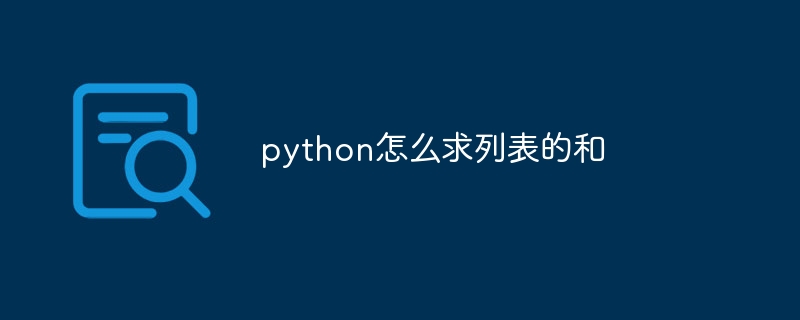Python 求列表和的方法有两种:1. 使用 sum() 函数直接求和;2. 使用 += 操作符逐个累加求和。

如何求 Python 列表的和
求列表元素的和在 Python 中非常简单。有两种常用的方法:
1. 使用 sum() 函数
<code class="python">numbers = [1, 2, 3, 4, 5] result = sum(numbers) # 结果为 15</code>
sum() 函数接受一个可迭代对象(如列表),并返回其元素的总和。
立即学习“Python免费学习笔记(深入)”;
2. 使用内置的 += 操作符
<code class="python">numbers = [1, 2, 3, 4, 5]
total = 0
for num in numbers:
total += num # 将每个数字添加到 total 中
# 结果为 15</code>这种方法通过一个循环迭代列表中的元素,并逐个将它们添加到累加器 total 中。
示例
假设我们有一个包含以下数字的列表:
<code>numbers = [1, 2, 3, 4, 5]</code>
使用 sum() 函数计算和:
<code class="python">result = sum(numbers) print(result) # 输出:15</code>
使用 += 操作符计算和:
<code class="python">total = 0
for num in numbers:
total += num
print(total) # 输出:15</code>这两种方法都会产生相同的结果:15。选择哪种方法取决于具体情况的需要和偏好。
以上就是python怎么求列表的和的详细内容,更多请关注php中文网其它相关文章!

python怎么学习?python怎么入门?python在哪学?python怎么学才快?不用担心,这里为大家提供了python速学教程(入门到精通),有需要的小伙伴保存下载就能学习啦!

Copyright 2014-2025 https://www.php.cn/ All Rights Reserved | php.cn | 湘ICP备2023035733号